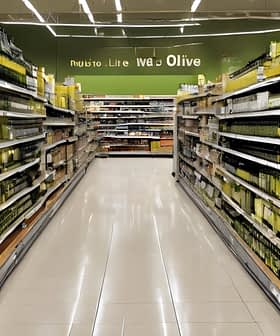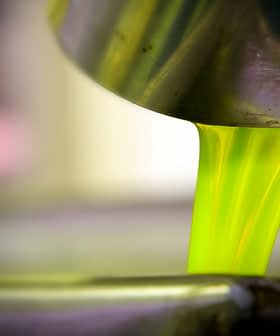From olives to cocoa beans, extreme weather events worldwide have contributed to rising prices for kitchen staples and luxuries.
The price of cocoa reached a record-high $9,865 (€9,244) per ton in April 2024 and has since fallen slightly to $8,380 (€7,935). Before September 2023, cocoa prices had not exceeded $3,600 (€3,300) per ton in more than 30 years.
We haven’t had to raise our prices on retail chocolate bars. This is largely because we use olive oil instead of much of the cocoa butter for many of the bars.
Global cocoa prices have increased due to various factors, including a failed crop due to bad weather, bean disease, smuggling, market speculation and illegal gold mining, which have reduced production and the availability of beans in Ghana, the world’s second-largest producer.
Meanwhile, drought and high spring temperatures across the Mediterranean basin in 2023 and 2024 resulted in consecutive years of poor olive harvests and decade-low olive oil production totals. The confluence of factors resulted in the International Monetary Fund’s benchmark olive oil price hitting record highs in January at $10,281 (€9,446) per ton and remaining historically high.
See Also:EVOO-Enriched Chocolate Benefits People With Type 2 Diabetes, Study FindsRising cocoa and olive oil prices have hit a niche market of olive oil chocolatiers, including K + M Chocolates.
Founded in Napa, California, in 2017 by French Laundry chef Thomas Keller and Tuscan olive oil producer Armando Manni, the company makes its chocolate from a carefully balanced recipe that includes extra virgin olive oil and cocoa powder.
Their method preserves the richness of the cocoa bean and provides health benefits by using extra virgin olive oil instead of cocoa butter. Indeed, researchers at the University of Pisa published a study in 2017 demonstrating that extra virgin olive oil-enriched dark chocolate improved the cardiovascular risk profiles of healthy participants.
“The price of cocoa has caused an enormous strain on chocolate producers everywhere,” Hallot Parson, K+M Chocolates’ general manager, told Olive Oil Times. “We are somewhat lucky to have a decent inventory of cocoa beans, but cocoa butter has become particularly costly.”
“To give you some context, from 2019 to 2023, we typically paid between $8 and $9 (€7.40 and €8.30) per kilogram for organic cocoa butter,” he added. “The current price is around $36 (€33) per kilogram. If we were to buy a 12.5 metric ton container, which is far more than we need or could afford, the price only drops to $26 (€23.8) per kilogram plus shipping from South America.”
Fortunately for K+M Chocolates, the company’s use of extra virgin olive oil instead of cocoa butter in various products has given them a competitive advantage despite the historically high olive oil prices.
“So far, we haven’t had to raise our prices on retail chocolate bars,” Parson said. “This is largely because we use olive oil instead of much of the cocoa butter for many of the bars. However, we also focus on making premium chocolate for pastry chefs and restaurant use. For these applications, good fluidity of the chocolate is critical, and that fluidity comes largely from a higher content of cocoa butter.”
While the company has not raised its prices, Parson said food service prices were rising, impacting large European chocolate producers who have historically dominated the market.
“Ironically, we may now be in a position to offer extremely competitive pricing against these mass-produced brands,” Parson said. “This has never been possible for most craft chocolate companies due to economies of scale and the added care we put into our sourcing and production.”
Along with the rising prices for raw materials, Parson said the company faces challenges with its expansion into Asia due to the transport logistics and costs.
“We have exported to Korea several times, but ultimately, it has proven too costly to establish a presence there,” Parson said.
Despite higher prices, consumers still crave both chocolate and olive oil. According to Fortune Business Insights, a market research firm, the Asia Pacific olive oil market is projected to grow to $18.4 billion (€16.8 billion) by 2030, a 30-percent increase from 2022.
Separate research estimates the global chocolate market will grow steadily to $197 billion (€181 billion) by 2032, 50 percent above its 2023 value.









